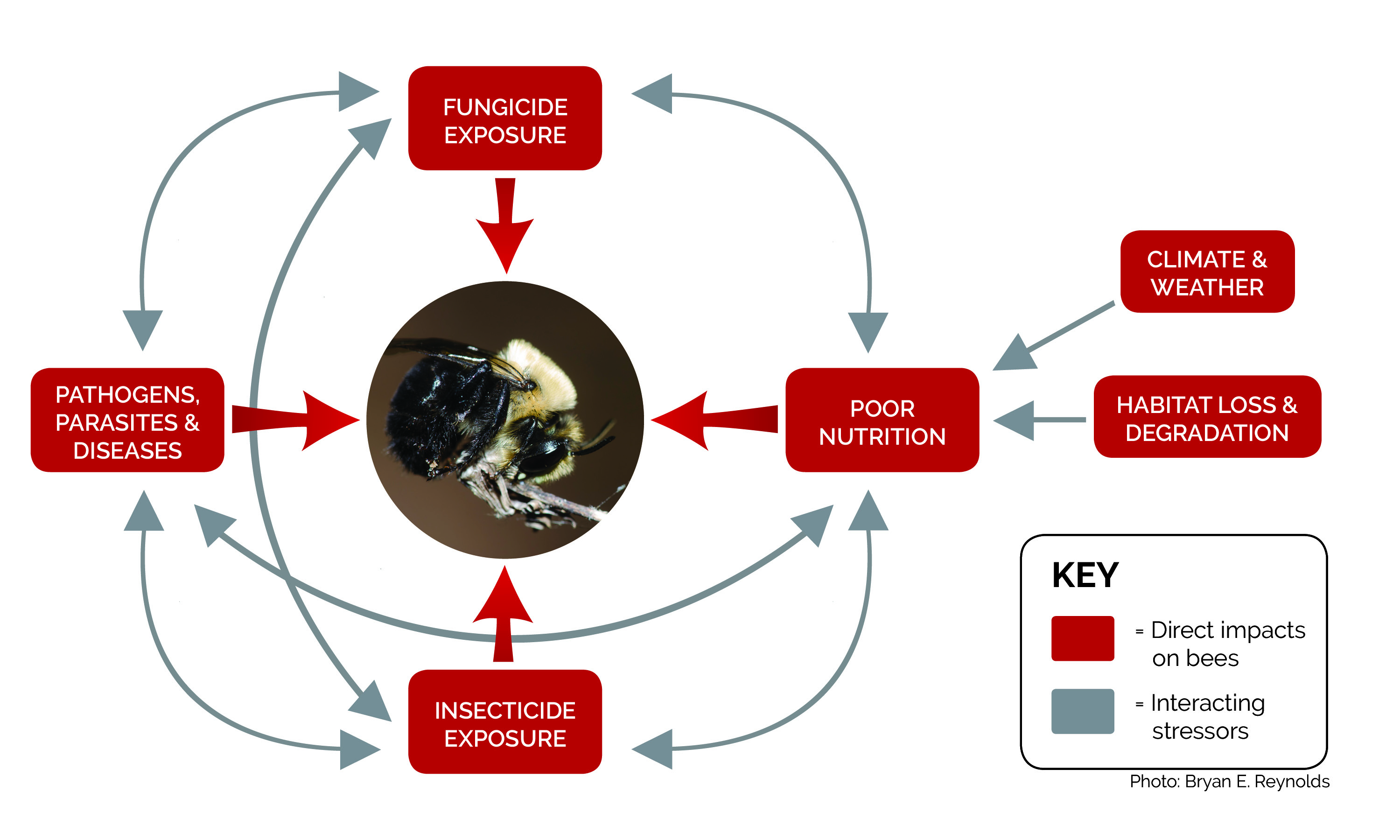New document reviews the current literature on fungicides and pollinators to help piece together potential risks and how best to respond.
Much of the public discussion about pesticide harm to bees has centered on insecticides—in particular, neonicotinoids. That makes intuitive sense. After all, insecticides are designed to harm insects directly. Fungicides, on the other hand, have long been considered relatively harmless for bees. However, a number of recent studies are calling this assumption into question. Research has shown that some fungicides kill bees on contact. Studies are also documenting that some fungicides synergize with (increase the toxic effects of) certain insecticides. Fungicide exposure has also been linked to higher levels of parasitic and viral infections in honey bee colonies, suggesting that some fungicides may impair a bee’s ability to fight disease.

The Xerces Society’s new fact sheet, Protecting Pollinators from Pesticides: Fungicide Impacts on Pollinators, reviews the current literature on fungicides and pollinators to help piece together potential risks and how best to respond.
Bottom line: Based on the current literature, we recommend taking precautions when responding to disease and pathogen issues. This starts with preventative pest management strategies. Effective strategies against disease include changing planting dates, incorporating effective sanitation practices, and/or crop rotation (while making sure the next crop is not also susceptible to the disease). For more information, please refer back to our fact sheet.
Further Reading
Farming With Native Beneficial Insects.
Organic Pesticides: Minimizing Risk to Pollinators and other Beneficial Insects.
Guidance to Protect Habitat from Pesticide Contamination.
Learn about the Xerces Society’s Pesticide Program.




